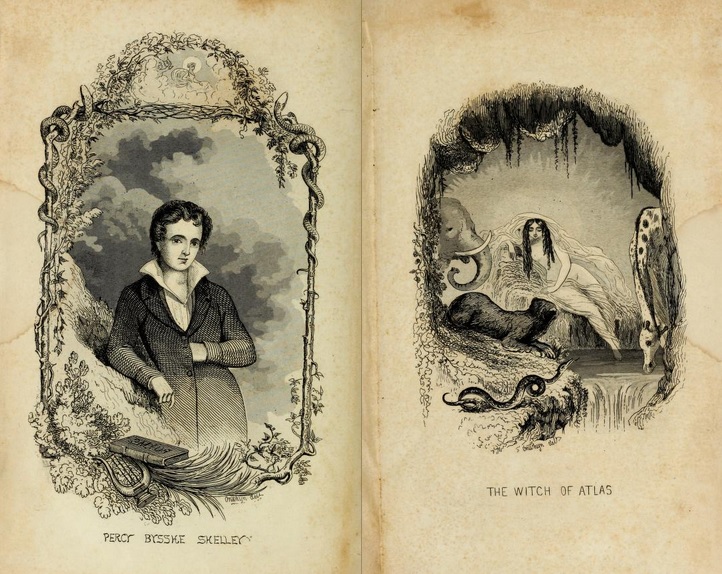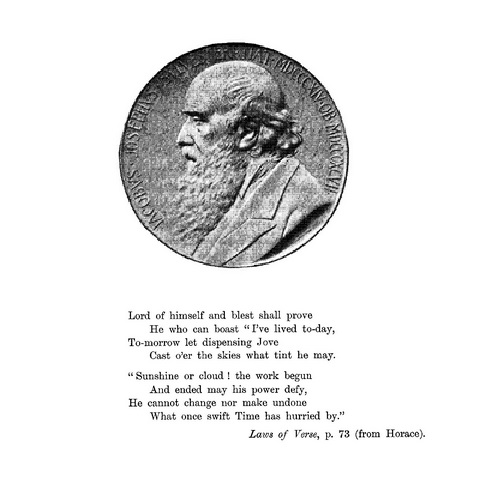TECHNICAL NOTE: The great majority of the links below are to
scanned antique books at the Internet Archive, most of them
anthologies. Poems frequently run for several pages; when coming
to the apparent end of a poem, turn the page to make sure!
Much of his enormous free-verse output concerned the impact of the Industrial Revolution on American life.
Now such a famous poem that it's hard to read.
Halsted Street Car
Sandburg, Carl:
John Ericsson Day Memorial, 1918
This poem is not about Ericsson the man, but about the role of technology
in the Allied victory.
Leather Leggings
What next, now that the Earth has been explored? "Under the sea
and out to the stars we go."
Limited
About a limited express train.
Manual System
About a telephone switchboard operator.
New Farm Tractor
Portrait of a Motor Car
Prayers of Steel
that it be made into part of a skyscraper.
Skyscraper
The Skyscraper Loves Night
Sandburg was a bit obsessed with skyscrapers.
Smoke Nights
A cycle of poems.
Statistics
A poem of the Great War.
Subway
Telegram
Under a Telephone Pole
Window
of a moving train at night.
Santayana, George
Service, Robert W.:
A tall tale inspired by Nineteenth Century geophysical speculations.
The Gramaphone at Fond-du-lac
The Telegraph Operator
Working on the edge of the world.
Serviss, Garrett P.: Astronomer and writer of science fiction. He tried to compete
with Wells and Verne, not too successfully.
Song featured in the end-of-the-world tale
The Second Deluge. The novel describes a collision (which the
singers unwisely refuse to take seriously) between the Earth and a spiral
nebula -- assumed in 1912 to be a fairly small object, not a galaxy!
Seward, Anna:
Shows an unusual interest in physical geography.
Ode on the Pythagorean System
Mainly about Pythagoras's belief in the transmigration of souls.
Ode to the Sun
The Terrestrial Year passing through the Signs of the Zodiac
The poem itself is not terribly scientific, but it was directly inspired
(as Seward's own introduction notes) by contact with astronomers
and scientific literature.
Verses Written in Dr. [Erasmus] Darwin's Botanic Garden
Darwin seems to have attempted to pass off this poem as his own.
Shelley, Percy Bysshe:
Sigourney, Lydia H.:
In the Nineteenth Century, political alliances differed from those of
today. Lydia Sigourney was a radical feminist, an abolitionist, an
Evangelical, and an advocate of Prohibition.
The Coral Insect
Science and Religion
The latter can do things even the former cannot: end despair, pardon sins,
disarm the tomb.
Sill, Edward Rowland:
Considered a "great minor poet" by his contemporaries and ignored today,
but arguably one of the deeper philosophical poets of the century. It is significant
that Josiah Royce was among the few to appreciate him.
The child's imagination infuses dull astronomical reality with beauty
and meaning.
The Clocks of Gnoster-Town
A rather heavy-handed satire, with some technological imagery
and references to statistics.
Five Lives
The characters are protozoa.
The Links of Chance
An early (and subtle) exploration of the "butterfly effect".
The Philosopher
His imagination and creativity are more valuable than his actual
philosophical system.
The Polar Sea
Space
A Nineteenth Century example of the "spaceship Earth" mythos.
Simons, K. D. M.., Jr.:
Smart, Christopher:
-
A Song to David: Not everyone in the 1700s saw
a conflict between science and religion ...
Smith, Charlotte: One of the great Romantic Nature-poets,
interested in deep geological time.
"Small,
viewless Æronaut ... with what design in Æther dost
thou launch thy form minute?"
The Horologe of the Fields
Clocks are all very well, but living creatures also measure time.
Smith, Clark Ashton:
Colleague of H. P. Lovecraft, who named
a fictional sorcerer "Klarkash-Ton" in his honour. His writing has all the obvious
vices and alleged virtues of Lovecraft's. (Smith wrote most of his poetry as a very young
man, then switched to prose. He died in 1961.)
Smith, Horace:
Smith was famous in the early 1800s for The Rejected Addresses, a book-length
collection of parodies and comic pieces written for the
rebuilding of Drury Lane Theatre after its destruction by fire.
("Away to Parnassus I'm
beckoned // List, warriors and dames, while my lay is rehears'd //
I sing of the singe of
Miss Drury the first // And the birth of Miss Drury the second.")
The alabster was already immensely ancient
when the Egyptians carved it. Probably Smith's most interesting science poem.
Architectural Atoms:
The (anti-)atomist part is mainly in the second half of the poem.
The Astronomical Alderman
A politician advocates the Flat Earth Theory. A modern reader is
less likely to be amused by the comic poem itself than by the coincidence that
the alderman's nickname is "Hubble Bubble".
Marshal Saxe and His Physician
Weak medical satire.
On A Stupendous Leg of Granite, Discovered
Standing by Itself in the Deserts of Egypt
In 1817, Smith and Shelley challenged one another
to produce a sonnet on a
specific passage in the
Bibliotheca Historica of Diodorus Siculus (i. 47).
Smith wrote this; Shelley wrote Ozymandias.
The Sun's Eclipse -- July 8th, 1842
Smith, J. R.:
Smith, James:
Satire on the neurologist/phrenologist Franz Joseph Gall.
The Mammoth
Satire on Napoleon as the "modern mammoth", interesting mostly because
it reflects the contemporary opinion that the mammoth was a sort of
tyrannosaurus-like carnivore.
Smith, Langdon:
A love-story spanning geological time.
There are at least two musical versions, both
greatly shortened and
adapted almost beyond recognition. One
was sung as a duet by Julie Andrews and
Kermit the Frog, with the scientific content removed;
available videos are probably under copyright.
At the opposite extreme, there is a
version by Richard Milner, who tries to update the
geology (and for some reason
sings with an extremely annoying pseudo-French accent).
Smith, Walter Chalmers:
In his day, a famous Scottish poet. He was also an hymn-writer and Free Church minister;
the heavy religious content of his work has consigned him to undeserved oblivion.
Although obviously a partisan of Faith over Reason -- he saw them as in conflict --
he seems to have had great admiration for the scientist's devotion to Truth.
or rather nightmare, triggered by Laplace's remark about not needing the
God-hypothesis.
Herr Professor Kupfer-Nickel
Anti-evolutionist satire.
Hilda Among the Broken Gods, Prologue
Clever Faust-inspired supernatural beginning to a naturalistic story.
Mysterious voices in an empty church: one sums up the Victorian dilemma
with the words of Mary Magdalene
"They have taken away my Lord, and I know not where they have laid
Him," while another remarks "Now that the gods are certainly dead //
(Brahma and Zeus and the Father and all) // With a desk and a lime-light
overhead // We might use this up for a lecture-hall."
Hilda Among the Broken Gods, Book III
Winifred Urquhart, who narrates Book III of Smith's Rashomon-style
novel-in-verse, is one of the few female scientists in
serious Nineteenth Century literature. The science-vs.-religion aspect of
the story (as opposed to the love-triangle aspect) also appears in the
September, 18-- section of the title character's narrative, but is less
prominent, curiously, in the accounts given by male characters.
Latto
Sympathetic portrait of a Victorian scientist unable to decide between materialism
and German philosophical idealism as his substitute for religion.
Olrig Grange
The changing nature of science is a major theme of this novel in verse. The protagonist's sister embodies the old natural-philosophy approach, his lecture-going beloved and her scientist father the new specialised professionalism. (That women are interested in science and capable of understanding it is not the point of the novel; it is simply taken for granted, as it would be today.)
Orthodox?
From the longer poem "Raban". Uses a mathematical metaphor for theology.
The Village Philosopher
Sympathetic, but perhaps a bit condescending.
Stansfield, Abraham:
The Naturalist
On the Recent Discovery of Seven Prehistoric Urns at Blackheath
Then and Now -- A Contrast (Three Sonnets Written at Kersal Cell)
Modern scientists know more than did mediæval hermits,
but the hermits' life was calmer.
Stead, Gilbert:
-
hν
Song written for a Cavendish Laboratory dinner.
Tune: "Men of Harlech".
Stead, R. J. C.:
Stedman, Edmund Clarence:
About sulphur-gathering in a Mexican volcano.
Fin de Siècle
A more Romantic science may restore the beauty
Nineteenth-Century scientific materialism has destroyed.
Hypatia
She lives on in Nineteenth-Century feminism.
The Skull in the Gold Drift
Catastrophist version of prehistoric California.
Stephen, James Kenneth: Virginia Wolfe's mentally disturbed cousin,
although one would never guess it from his comic verse.
He is best remembered for the line "When
the rudyards cease from kipling, and the haggards ride no more."
Evidently meaning a
student society at Eton College. "A. H. C." is probably
"Arthur Hugh Clough".
The Littlego
Ode on the 450th Anniversary Celebration at Eton
With attempted arithmetic jokes.
Steam-Launches on the Thames
Dreadful things; they ruin punting.
Of W. W. (Britannicus):
"Poetic lamentation on the insufficiency of steam locomotion in the
Lake District": a satire written during the Thirlmere waterworks
environmental controversy of the 1880s.
Stephens, J. Burton:
One of the first major Australian poets. Much of his work is quite serious, but
his science-related pieces are with some exceptions (intended to be) humourous.
Long comic piece about a chap with mineral rights to some carbon that
"was hardly more than lignite, though a little more than peat, but
some day ... bound to prove a treasure."
The Courtship of the Future
Love and biotech in 2876.
The Dark Companion
A star too dim to be directly observed (an important research subject
for Victorian astronomers) as theological metaphor.
Macaulay's New Zealander
Macaulay's 1840 anticipation of a time when
"some traveller from New Zealand shall, in the midst of a vast solitude,
take his stand on a broken arch of London Bridge to sketch the ruins of St. Paul's"
was the Nineteenth Century's most famous vision of the future until Wells's
Time Machine. It had a special resonance, obviously, for Stephens
in the Antipodes.
The Power of Science
Meant to be comic; anti-evolution, anti-science, and anti-feminism.
Spirit and Star
Romantic astronomy as metaphor.
Stephens, James:
-
The Shell
The terrifying sense of a world without humanity.
Stevenson, Robert Louis:
-
From a Railway Carriage
Ostensibly from a child's point of view, but capturing the sensations
of many a Nineteenth Century adult.
Stone, T. N.:
-
A Rhymster's Dream
"After a supper and meeting to extend Cape Cod Railroad
to Provincetown."
Streeter, Oscar W. ("The Homeless Boy"):
Stopes, Marie: Although now remembered mainly as
an outspoken advocate of birth control, she was a professional palæobotanist as well as a poet and literary critic (with a particular interest in Japanese drama). Her verse on scientific subjects (mostly unavailable online) was generally intended to be comic; she only included one very atypical example ('To Capt. Scott') in her collected poetical works.
Palæobotanical verse from Stopes's newsletter The Sportophyte.
To Captain Scott:
Stopes considered joining Scott's ill-fated Antarctic expedition as a naturalist.
Sylvester, J. J.:


